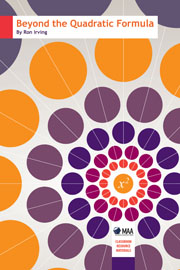Preface
Summary
I have also omitted here the demonstration of most of my statements, because … if you take the trouble to examine them systematically the demonstrations will present themselves to you and it will be of much more value to you to learn them in that way than by reading them.
—René Descartes [19, p. 192]Every student learns the formula for the solution of a quadratic, or degree two, polynomial equation in a high school algebra course. It is one of the few mathematical topics that many adults remember years later, at least by name. However, the study of cubic, or degree three, and quartic, or degree four, polynomial equations has largely disappeared from the mathematical curriculum. In the rush to calculus, high school students do not see it. At the university level, undergraduate mathematics majors often crown their algebraic studies with Galois theory, which provides the tools needed to show that there is no formula for the solution of degree five equations analogous to the quadratic formula for degree two equations. Galois Theory can also be used to show that formulas exist for solutions in degrees three and four, but these may be skipped over.
What are the formulas? The answer is at the heart of this book. The results are both elementary and beautiful. Moreover, they are an essential part of the history of mathematics, representing the high point in mathematical developments of the sixteenth century.
- Type
- Chapter
- Information
- Beyond the Quadratic , pp. ix - xivPublisher: Mathematical Association of AmericaPrint publication year: 2013



